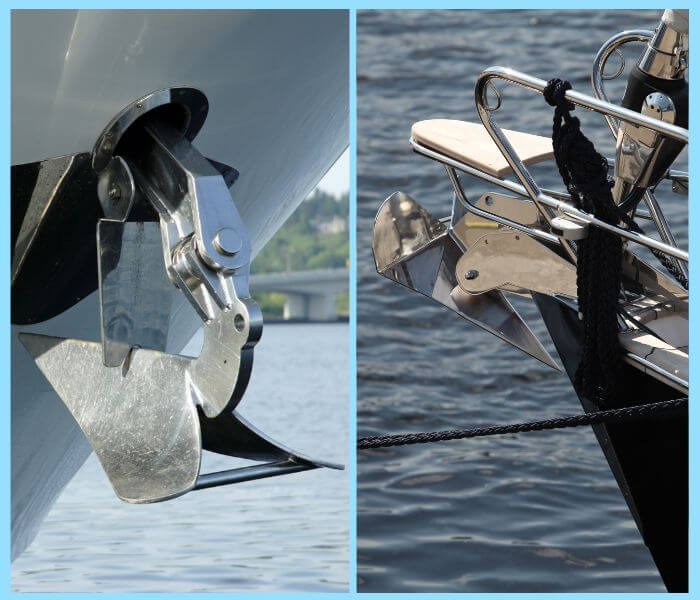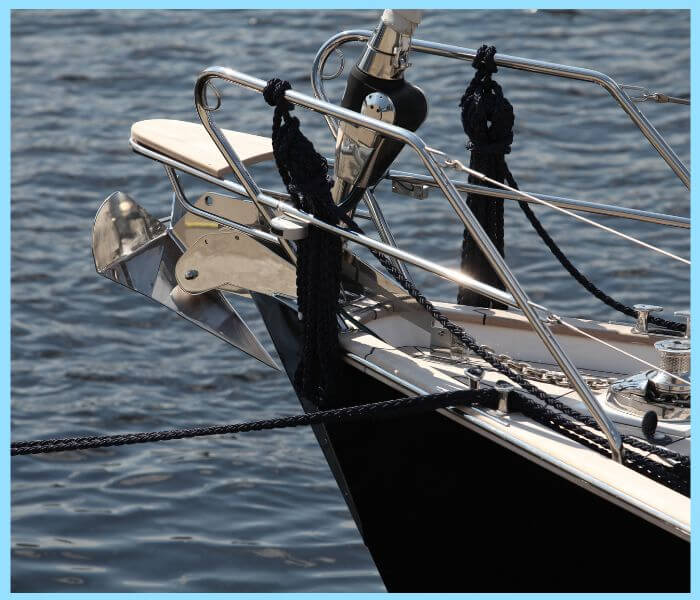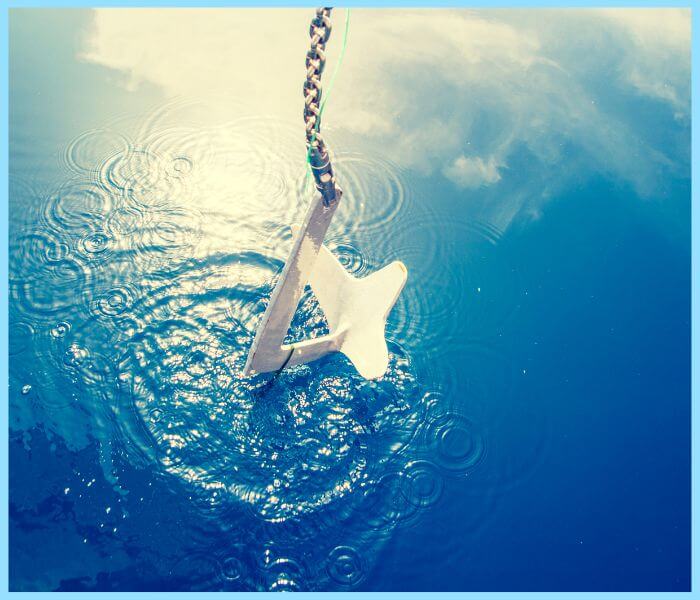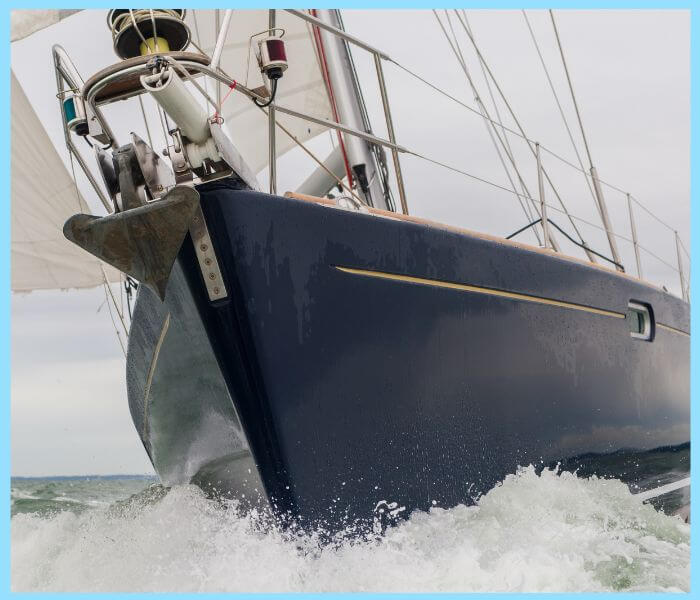Anchoring is not to be taken lightly; it is a critical skill that underpins the success of any sailing endeavour.
A well-anchored boat is one that is both safe and steady. A good anchorage also assures the safety of everyone onboard.
Anchoring is the subtle art of connecting with the seabed, creating a temporary home in the vast blue.
However, the absolute mastery lies in setting an anchor and retrieving it with equal finesse.
A smooth retrieval process is essential to continue your journey with confidence.
Common challenges in anchor retrieval
Retrieving an anchor, a seemingly straightforward task, can often be fraught with challenges. Many of these are dictated by the whims of the environment and the anchor's design.
For instance, anchors can become overly buried in the seabed, particularly in areas with soft, sandy or muddy bottoms. This situation demands more than just physical strength; it requires strategic thinking to dislodge the anchor without damaging the anchor or the seabed.
Another common issue is the tangling of the anchor rope or anchor line, which can happen in areas with strong currents or when the boat drifts excessively.

Different anchor types
When it comes to anchoring, you need to understand the types of anchors and their specific uses, which is crucial for safety and efficiency.
There are several common types of anchors, each with unique characteristics and ideal conditions for use:
Plow anchor
Resembling a farmer's plough, the plow anchor is known for its robust build and versatility. It's designed to dig into various seabeds, including sand, mud, and even rocky bottoms. Its notable features include a heavy, pointed tip and broad flukes that allow it to set quickly and hold firmly in diverse anchoring conditions.
Danforth anchor (Fluke)
The Danforth anchor, also known as the fluke anchor, is characterised by its lightweight and flat design. It has two long, sharp flukes that pivot and dig into softer seabeds such as sand and mud. Danforth anchor is highly effective in these conditions due to its wide flukes offering a large surface area. However, its performance can be less reliable in rocky or heavily weeded seabeds. Danforths are also appreciated for their ease of storage, making them a good choice for smaller boats or as a secondary anchor.
Mushroom anchor
Named for its mushroom-like shape, this anchor is primarily used for permanent moorings. Over time, it buries itself into the seabed, creating a secure hold. The mushroom anchor works best in soft, muddy conditions where its shape allows it to sink and create suction. It's not typically used for short-term anchoring due to its gradual setting nature and the specific seabed requirements.
Matching anchor types to seabed conditions
The key to successful anchoring is matching the anchor type to the seabed conditions, and here's a quick guide:
- Sandy bottoms: Danforth (fluke) anchors are excellent for sandy conditions due to their sharp flukes, which can easily penetrate and hold in the sand.
- Muddy bottoms: Both plow and Danforth anchors perform well in mud. Plow anchors act consistently in various mud consistencies, while Danforth anchors provide superior holding in softer mud.
- Rocky or gravel seabeds: Plow anchors are preferable in rocky conditions due to their sturdy construction and ability to set amidst rocks.
- Weedy or seagrass beds: These conditions are challenging for most anchors. Plow anchors, with their pointed tips, can sometimes penetrate through the vegetation to find a holding ground.
Understanding these nuances and selecting the suitable anchor for the expected seabed conditions ensures secure anchoring and facilitates easier retrieval.
A mismatched anchor can lead to poor holding, dragging, or difficult retrieval, which can be time-consuming and potentially hazardous.
Hence, a sailor's arsenal often includes different types of anchors to cater to varying anchoring scenarios.

What is the best way to retrieve an anchor - Step-by-step guide
Before beginning the anchor retrieval process, assessing your surroundings is essential.
The direction and strength of wind and currents can significantly impact the ease of retrieval. These factors can either aid in lifting the anchor or create additional resistance.
Awareness of these elements can inform the best approach to retrieving your anchor, ensuring a smoother operation.
Effective crew communication and clear role assignment are paramount during anchor retrieval. Each member should understand their responsibilities, whether managing the helm, handling the anchor line, or being on the lookout for any obstacles.
Coordinated teamwork ensures the process runs smoothly and safely, minimising the risk of errors or accidents.
The first step in anchor retrieval is correctly positioning your vessel. The boat should be manoeuvred directly above the anchor, reducing the strain on the anchor line and easing its release from the seabed. This step requires a deft hand at the helm and a good understanding of the boat's response to wind and currents.
Sometimes, anchors can become firmly lodged in the seabed. Dislodging them safely requires a combination of gentle manoeuvring and strategic use of the boat's engine. Techniques such as gentle motoring forward can help loosen the anchor, making it easier to lift. Patience is vital; rushed attempts can lead to damage or injury.
Once the anchor is free, bringing it aboard requires a balance of strength and technique. Using a windlass or other mechanical aids can significantly ease the process.
Maintaining control of the anchor line is important to prevent it from getting tangled or causing injury.
Efficient teamwork during this stage also, ensures that the anchor is retrieved safely and the boat is ready to move on.

Common issues with retrieving an anchor
Anchor retrieval complications are a routine part of sailing that demands patience and technical knowledge.
Tangled anchor lines are among the top challenges encountered. Such tangling can be caused by various factors, including shifting winds or currents that cause unpredictable boat movement or incorrect initial laying of the anchor line.
For example, in strong currents, a boat's extensive swing can cause the anchor line to entwine with the keel or propeller, creating a complex knot.
Regular checks and meticulous coiling of the line are key preventative measures.
In the event of tangling, it's crucial to untangle the line in an orderly fashion, avoiding any additional knots or damage. Resorting to cutting the line is an extreme measure and should be avoided as it could result in losing the anchor.
Another problem is an anchor getting excessively embedded in the seabed, particularly in soft mud or sand, perhaps following a heavy storm or from prolonged anchoring in one not-so-ideal anchoring location.
Merely pulling on the line might prove ineffective in such situations.
Altering the pulling direction, like manoeuvring the boat differently, can assist in releasing the anchor. A further strategy is to attach a buoy to the anchor line, utilising its buoyancy to apply an upward force, facilitating the anchor's extraction.
These scenarios are a real test of a sailor's capacity to adjust to varying circumstances and their grasp of anchor and seabed interactions.
Challenges of anchor retrieval often involve dealing with a variety of scenarios where anchor lines can become tangled, such as:
- The anchor line gets caught under the vessel due to shifting winds.
- Line wrapping around underwater objects like rocks or coral.
- Incorrectly spooled line leading to internal knots.
- Anchor line snagging on debris during retrieval.
- Overlapping of anchor lines in crowded anchorages.

After the anchor is aboard - post-retrieval steps
Once the anchor returns to the deck, the post-retrieval begins - a phase to ensure everything is shipshape for future voyages.
First on the list is thoroughly examining the anchor and its accompanying gear. This is where you scrutinise the shank, flukes, and anchor line for any signs of wear or damage.
Regular checkups are the secret to averting potential equipment mishaps and extending the life of your anchoring gear.
You also have to stow the anchor correctly. Don't just put it away; secure it firmly and methodically coil or flake the line to avoid tangles.
And then comes the moment of reflection - ask yourself: What sailed smoothly, and what could use a bit of tweaking?
This introspection contributes also to the crew's collective experience.
Every anchor retrieval, whether it's easy or more complicated, is a new chapter in your ongoing journey of mastering the secrets of the nautical trade.
Treating your anchor with care and consideration and respecting the anchoring process is the true answer to the question, "What is the best way to retrieve an anchor?".
Each anchor retrieval, no matter its simplicity or complexity, offers insightful lessons in sailing skills.
Proper retrieval and proper upkeep of your anchor, which is the crucial piece of equipment on our vessel, will always remain your best ally in your sailing adventures.


